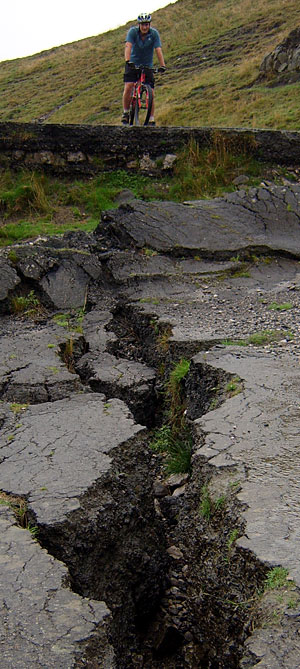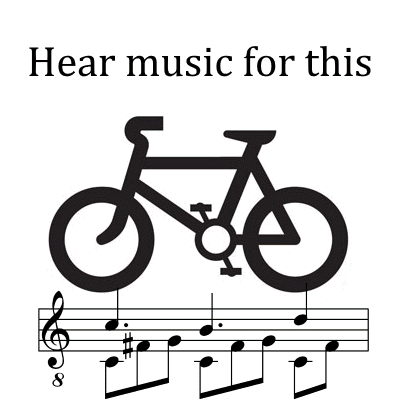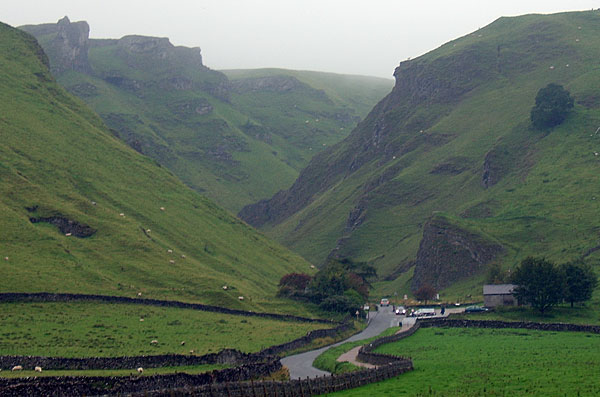
In England, we have Mam Tor, the shivering mountain, which prevents a similarly intrepid motorised passage from Sheffield to Chapel-en-le-Frith. But you can cycle it, and inspect first hand its unique collapsed 2km-long road that looks more like an earthquake zone than the Peak District.
Before it became tarmac blancmange, it used to be the A625. From Sheffield the road still goes west through the Hope Valley to Castleton, a solid Peaks town popular as a base for exploring the beautiful surrounding country. And up to 1977, the route continued confidently on out the town, turning right, up, and then sharp left, to hairpin its way calmly over the flank of Mam Tor.
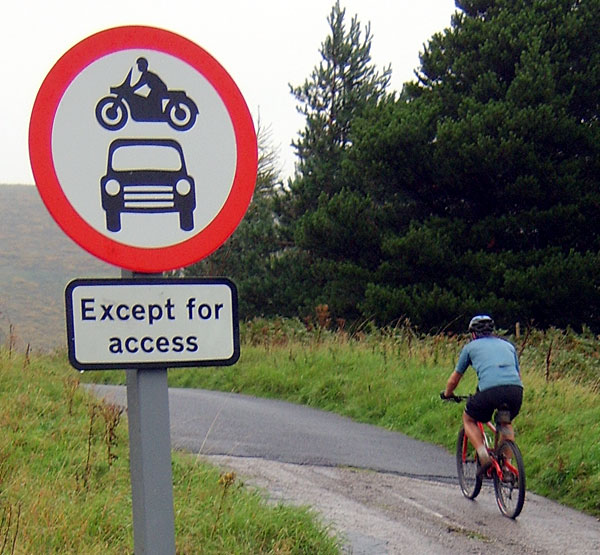
But the restless hillside is composed of horizontal layers of shale, and when they get wet, they slide across each other like a tottering pile of CD cases. That year, storms – brutally contradicting the previous parched summer – saturated the mountain; the fragile surface broke up, and the road was pummelled and pulled apart. Repairing the A625 became like painting the Forth Bridge with household emulsion.
In 1979 the authorities simply gave up, closed it, and left the road to crumble its way gradually down the hillside. The A625 was for years in two parts, separated like the Pan-American Highway by its seething nemesis. (Those parts have now been renumbered, the eastern half as the A6187. Another route out of Sheffield is now called the A625.) Motor traffic’s only, very unsatisfactory, alternative was and still is Winnats Pass, the steep, narrow and spectacular tendril of old minor road that the A625 was originally built to avoid.
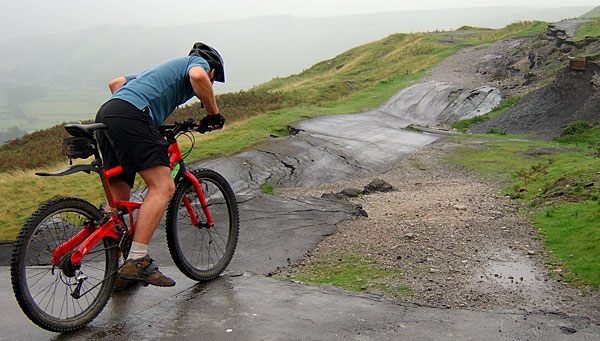
But cyclists can enjoy the road in all its decaying splendour. Cycle west out of Castleton, past the shops and pubs. Instead of branching left up the ‘main’ road over Winnats Pass, which machetes its way through the hills to your left, stay straight on. This is a cul-de-sac, used as a car park by Mam Tor walkers. The road soon bends right, starts to rise, and ends for motorised traffic at a gate.
A sign intriguingly warns you to ‘beware of live traffic’. But you can carry on. In a couple of places the road surface breaks up and drops away, and you can easily see why it would now cost an estimated £100,000 year to maintain.
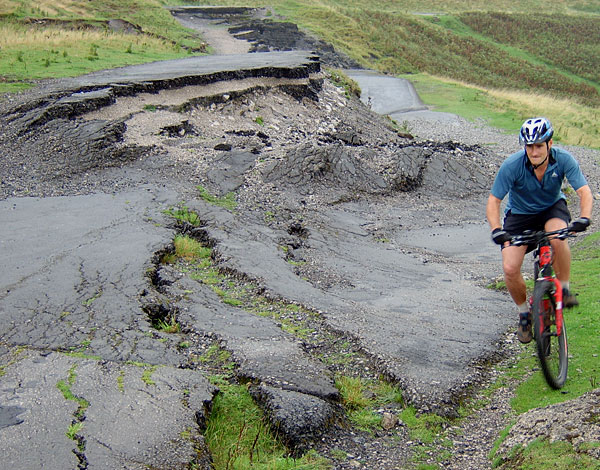
But it’s past the hairpin that the plasticine peak does its most dramatic stuff. For a hundred metres or more the road is squashed, torn apart and ripped up, its entrails gruesomely on display, as if hit-and-run by a monster rabbit exacting frenzied revenge for its compressed kin. At some points, fault-line shears expose a cross-section of the road’s lavishly-layered structure. You can see the roadmakers were trying hard.
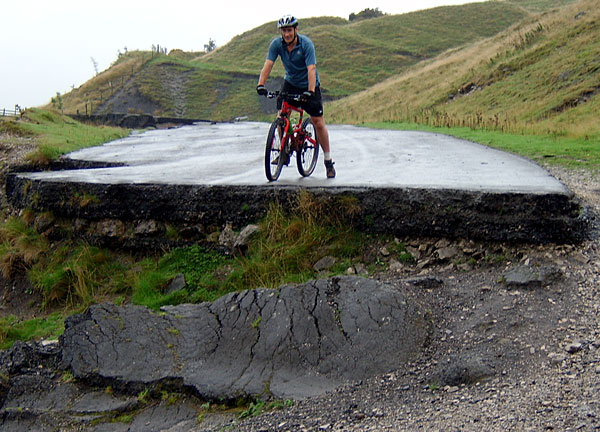
At the greatest drop-off, a sheer wall the height of an ambulance, you’ll see why it’s best to do it uphill. Were you coming down, you could easily fail to see it.
The scenery’s pretty good, too. On your right as you climb up, you see a ridge flecked with walkers; Edale is on the other side. Soon you arrive at another gate, and you’re back to the spur of stable, motorable surface that takes you back to the main road. From here, go left and left, and make sure your brake blocks are healthy. This is Winnats Pass, plunging you over 200m in around 2km, with stretches of 1 in 5. The surface is smooth, there are no sharp bends, and your line of sight is good. If there were no traffic you could let go and be a two-wheeled human cannonball. But there usually is, and it’s pretty narrow, so just enjoy a steady free ride and the momentous gorge scenery, which is almost rudely un-English. The road levels out and brings you effortlessly back to Castleton.
A rainy day is actually not a bad time to visit the slithering summit and its downwardly mobile lane.
Mist and drizzle enhances the feeling of being in some far-flung part of the third world; you half-expect to find refugees huddled in tents, and irritatingly confident Dutch backpackers telling you it was much better ten years ago.
Back in Castleton, you have plenty of opportunities for sitting out the downpour in a coffee shop or tavern, along perhaps with aqueous walkers who were huddled in tents that morning.
Music for guitar: Mam tor
In the player below, you can listen to my etude for classical guitar, Mam tor, written in 2021 and inspired by these bike rides. In Polish, curiously, mam tor means ‘I have a track’, which Mam Tor itself clearly doesn’t. (Or hear the music and see the score on YouTube.)
